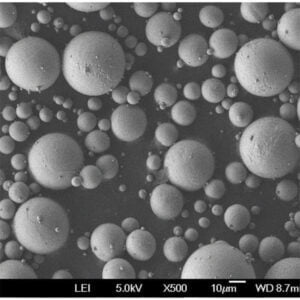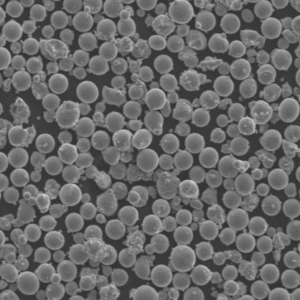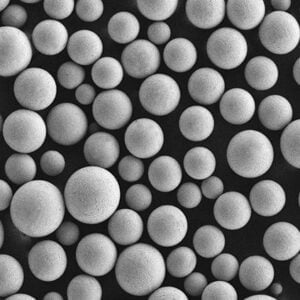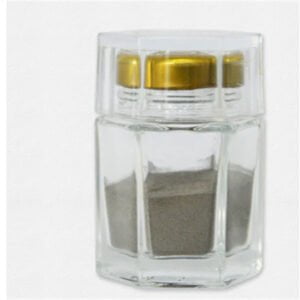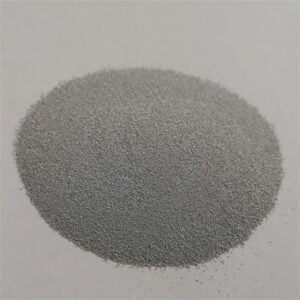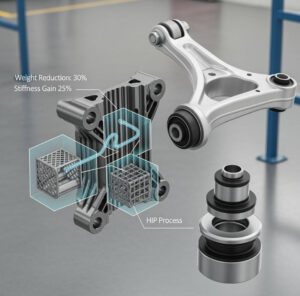Nickel Based Powders
Table of Contents
Nickel based powders refer to powders made from nickel or nickel alloys that are used in various applications such as additive manufacturing, surface coating, welding, and more. This article provides an overview of nickel based powders, their composition and properties, applications, specifications, pricing, comparisons, and FAQs.
Overview of nickel based powders
Nickel based powders are metallic powders composed primarily of nickel along with alloying elements like chromium, molybdenum, tungsten, and others. Key properties that make these powders suitable for high performance applications are:
- High strength and hardness at elevated temperatures
- Excellent corrosion and oxidation resistance
- Good wear resistance
- High thermal and electrical conductivity
- Low coefficient of thermal expansion
These powders can be produced through processes like gas or water atomization, electrolysis, carbonyl decomposition etc. in various sizes and morphologies. Common nickel alloys used are Inconel, Monel, Hastelloy, Nichrome etc.
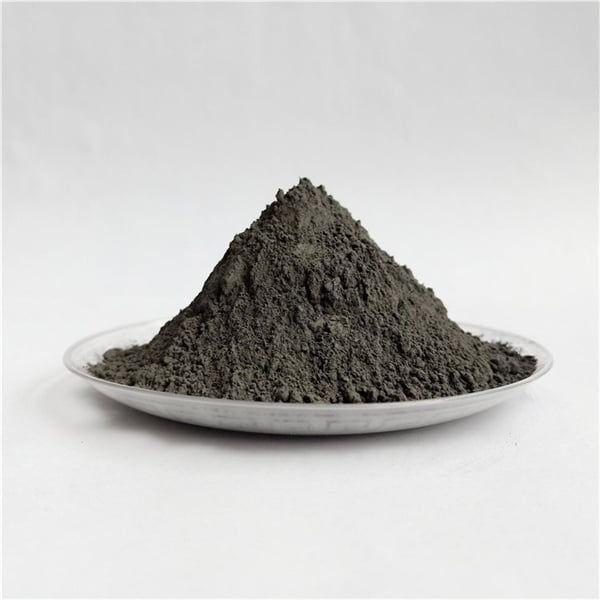
nickel based powders Composition
Nickel based powders contain nickel as the main element along with other alloying elements. Typical compositions are:
| Alloy | Nickel (%) | Other Elements |
|---|---|---|
| Nickel | 99%+ | – |
| Inconel | 72% Ni, 14-17% Cr | Iron, niobium, copper, aluminum |
| Monel | 63-70% Ni, 27-34% Cu | Iron, manganese, silicon, carbon |
| Nichrome | 80% Ni, 20% Cr | Iron |
| Hastelloy | 42-62% Ni | Chromium, molybdenum, tungsten |
The ratio of nickel and alloys determines the key characteristics like strength, corrosion resistance, oxidation resistance, etc.
nickel based powders Properties
Nickel alloy powders offer exceptional properties compared to nickel which makes them suitable for harsh environments:
| Property | Characteristics |
|---|---|
| High temperature strength | Retain strength and resist creep deformation at over 1000°C |
| Corrosion resistance | Form protective oxide layer, resistant to acids, alkalis etc. |
| Oxidation resistance | Slow rate of oxidation in air up to ~1100°C |
| Wear resistance | Resist erosion, abrasion, galling better than steel |
| Thermal conductivity | Higher than stainless steels, ~20 W/m.K for Inconel 625 |
| Electrical resistivity | Range of alloys have high resistivity for heating elements |
| Coefficient of thermal expansion | Low CTE provides thermal shock resistance |
Types of nickel based powders
Nickel powders are available in different types suitable for various methods of deposition:
| Type | Common Alloys | Size Range | ** Morphology** |
|---|---|---|---|
| Gas Atomized | Inconel 625, 718; Monel, Hastelloy | 5 – 150 μm | Rounded, spherical |
| Water Atomized | Inconel 625, 718; 316L, 304L | 10 – 300 μm | Jagged, irregular |
| Electrolytic | Nickel, Monel, Nichrome | 1 – 150 μm | Dendritic, crystalline |
| Carbonyl | Nickel | 0.5 – 12 μm | Flakes, chips |
- Gas and water atomized allow better packing density and flowability
- Electrolytic have higher oxygen content which causes porosity
- Carbonyl nickel powder has high purity (>99% Ni)
nickel based powders Applications
Major application areas of nickel alloy powders include:
| Industry | Applications |
|---|---|
| Additive Manufacturing | Aerospace components, turbine blades, rocket engines |
| Welding | Repair of turbines, tools, molds; joining inconel, hastelloy |
| Surface Coating | Corrosion protection, wear resistance, overlay coatings |
| Electronics | Resistors, heating elements, conductors |
| Diamond tools | Bonding diamond grits for cutting, drilling, grinding |
| Magnets | Improving magnetic properties |
| Batteries | Nickel electrodes in Ni-Cd, Ni-MH batteries |
Unique properties like high strength and corrosion resistance allow nickel powders to enable critical applications.
nickel based powders Specifications
Nickel alloy powders are available in various sizes, morphologies and must meet composition, purity and consistency specifications for reliable performance.
| Parameter | Range/Grades |
|---|---|
| Particle size | 5 μm to 300 μm |
| Particle shape | Spherical, irregular, flakes |
| Apparent density | 2 – 5 g/cc |
| Tap density | 4 – 7 g/cc |
| Flow rate | 15 – 25 s/50g |
| Purity | 98.5% to 99.9% |
| Oxygen content | <0.5% |
| Hydrogen loss | <0.1% |
Standards organizations like ASTM International provide specifications on testing methods and thresholds for nickel powders:
- ASTM B162: Standard for Nickel Plate, Sheet, Strip and Rolled Bar
- ASTM B283: Gas Atomized Nickel Powder and Powder Metallurgy Products
- ISO 4499-4: Metallic powders – Determination of oxygen and nitrogen contents by hot extraction
nickel based powders Suppliers and Pricing
Some leading global suppliers of nickel and nickel alloy powders are:
| Company | Brands | Alloys | Price Range |
|---|---|---|---|
| Hoganas | Nicopowder® | Nickel, carbonyl nickel | $50 – $100 per kg |
| Sandvik Osprey | Nifco® | Nickel, copper nickel, nickel iron | $75 – $250 per kg |
| Carpenter Technology | Cartech® | 625, 718, 690,Monel, Hastelloy | $100 – $500 per kg |
| AMETEK | Ultrafine nickel | Carbonyl nickel | $80 – $120 per kg |
Pricing varies based on:
- Alloy grade: Inconel 718 > Inconel 625 > Nickel > Monel
- Particle size: Nano powder > Micro powder
- Purity levels: 99.9% Nickel > 98% Nickel
- Quantity and bulk discounts
Comparisons
| Parameters | Gas Atomized | Water Atomized | Electrolytic |
|---|---|---|---|
| Cost | High | Low | Medium |
| Purity | High – 99%+ | Medium – 98-99% | Low – 90-98% |
| Oxygen Pickup | Low | High | High |
| Particle Shape | Rounded | Jagged | Dendritic |
| Flowability | Excellent | Moderate | Poor |
| Apparent Density | High | Medium | Low |
| Applications | AM, coatings | Welding, surface coatings | Heating elements, electronics |
Key differences in production process lead to tradeoffs in cost, quality and performance.
Advantages of nickel based powders
Nickel alloy powders provide unique benefits over other materials:
- Withstand high temperatures exceeding 1000°C
- Resist corrosion in acidic or alkaline environments
- Enable additive manufacturing of complex geometries
- Provide excellent bonding strength for diamond tools
- Are biocompatible for medical implants
- Have controlled expansion characteristics
- Can be recycled and reused in powder metallurgy
Limitations
Some drawbacks associated with these powders are:
- Expensive compared to iron or copper powders
- Sensitive to oxygen contamination during handling
- Prone to developing surface cracks if overheated
- Difficult to process by cold compaction and sintering
- Require controlled atmospheres during thermal spraying
- Lower electrical and thermal conductivity versus copper
Proper powder handling, storage and processing methods must be used to minimize limitations.
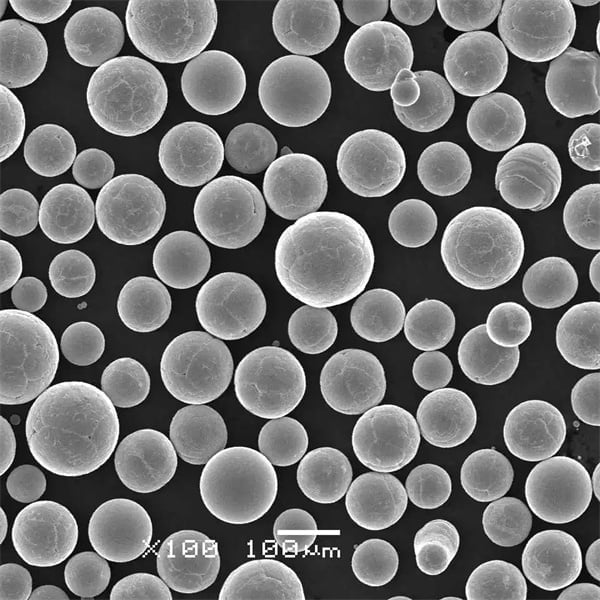
FAQs
Q: Are nickel powders hazardous?
A: Inhalation over long periods may cause respiratory sensitization. Proper PPE like masks and gloves should be worn while handling.
Q: What is the shelf life of nickel powders?
A: If stored under inert atmosphere in sealed containers, the shelf life can exceed 5 years. Oxygen and moisture absorption degrades quality over time.
Q: What particle size is best for thermal spraying?
A: 20-45 μm offers better density and bond strength. Finer powders have lower deposition efficiency.
Q: Are these magnetic or non-magnetic?
A: Pure nickel is slightly magnetic. Most nickel alloys are non-magnetic except Nichrome and MuMetal containing iron and nickel.
Q: Can nickel alloys be 3D printed?
A: Yes, Inconel and Hastelloy grades offer excellent properties but require optimized parameters for laser melting/sintering.
know more 3D printing processes
Additional FAQs about Nickel Based Powders (5)
1) How do I choose between Inconel, Hastelloy, and Monel nickel based powders for corrosion service?
- Inconel (e.g., 625/718) balances high-temperature strength and oxidation resistance. Hastelloy (e.g., C‑276, C‑22) excels in wet corrosion and chlorides/acid mixtures. Monel (Ni‑Cu) is strong in seawater and hydrofluoric media but lower high‑temp strength.
2) What powder attributes most affect AM part quality with nickel alloys?
- Narrow PSD (e.g., 15–45 μm for LPBF), high sphericity, low satellites, low interstitials (O/N/H), and stable flow/tap density. These drive spreadability, melt pool stability, porosity, and fatigue life.
3) Can water‑atomized nickel alloys be used for binder jetting?
- Yes, with conditioning: trim fines (<10 μm), reduce oxygen (hydrogen anneal if compatible), target bimodal PSD for packing, and apply optimized sinter/HIP. Expect different shrinkage than gas‑atomized feedstock.
4) What CoA data should be mandatory for critical nickel based powders?
- Full chemistry vs alloy spec; O/N/H (ASTM E1409/E1019); PSD D10/D50/D90 and span (ISO 13320/ASTM B822); flow (ASTM B213), apparent/tap density (ASTM B212/B527); shape metrics (dynamic image analysis); moisture/LOI; inclusion screening; lot genealogy.
5) How should nickel based powders be stored to minimize oxidation and caking?
- Keep sealed in inert gas (argon/nitrogen), RH <10%, 15–25°C. Avoid repeated thermal cycling, use ESD‑safe containers, and record reuse cycles with periodic O2 and PSD checks.
2025 Industry Trends for Nickel Based Powders
- Cleanliness focus: Expansion of EIGA/vacuum gas atomization to lower O/N/H for better AM fatigue performance, reducing HIP reliance in thin sections.
- Inline QA: Real‑time laser diffraction and dynamic image analysis at atomizers tighten PSD/shape control, improving sieve yield and consistency.
- Binder jet growth: Cost‑down routes using conditioned water‑atomized Inconel 625/718 powders with sinter+HIP achieving >99% density.
- Sustainability: Argon recovery, closed‑loop water, and Environmental Product Declarations (EPDs) gain traction in procurement.
- Regional capacity: New lines in NA/EU/India shorten lead times for Inconel 625/718, Hastelloy C‑276, and Ni‑Cu powders.
2025 snapshot: nickel based powders metrics
| Metric | 2023 | 2024 | 2025 YTD | Notes/Sources |
|---|---|---|---|---|
| Typical O content, GA Ni alloys (wt%) | 0.030–0.060 | 0.025–0.050 | 0.020–0.045 | Supplier LECO trends |
| LPBF as‑built density, 625/718 (%) | 99.5–99.7 | 99.6–99.8 | 99.6–99.85 | Optimized parameter sets |
| CoAs with DIA shape metrics (%) | 45–60 | 55–70 | 65–80 | OEM qualification updates |
| Argon recovery at atomizers (%) | 25–35 | 35–45 | 45–55 | ESG/EPD programs |
| Standard GA lead time (weeks) | 6–9 | 5–8 | 4–7 | Capacity additions |
| Price range GA 625/718 (USD/kg) | 70–150 | 65–140 | 65–135 | PSD/region dependent |
References: ISO/ASTM 52907; ASTM B822/B213/B212/B527; ASTM E1019/E1409; ASM Handbook; standards bodies: https://www.astm.org, https://www.iso.org
Latest Research Cases
Case Study 1: Closed‑Loop Atomization Control for Inconel 625 (2025)
Background: Variability in PSD tails caused recoater streaks and lack‑of‑fusion in LPBF builds.
Solution: Implemented at‑line laser diffraction + dynamic image analysis with automated adjustments to gas pressure and melt flow; added fines bleed logic.
Results: PSD span −20%; >63 μm tail −52%; LPBF relative density improved from 99.4% to 99.75%; sieve yield +5%; scrap −18%.
Case Study 2: Binder Jetting Hastelloy C‑276 with Conditioned WA Powder (2024)
Background: Chemical processing OEM needed corrosion‑resistant manifolds at lower cost.
Solution: Water‑atomized C‑276 conditioned via fines trimming and H2 anneal (O: 0.11% → 0.07%); bimodal PSD packing; sinter profile + HIP 1160°C/150 MPa/3 h.
Results: Final density 99.3–99.6%; dimensional 3σ −33%; ASTM G28 corrosion met target; part cost −10–12% vs GA powder baseline.
Expert Opinions
- Prof. Iain Todd, Professor of Metallurgy and Materials Processing, University of Sheffield
Key viewpoint: “Powder spreadability and interstitial control dominate AM outcomes—pair PSD with shape analytics for stable nickel based powder performance.” - Dr. Ellen Meeks, VP Process Engineering, Desktop Metal
Key viewpoint: “Binder jet success with nickel alloys hinges on fines discipline and furnace control; small shifts in <10 μm content drive shrink and density.” - Marco Cusin, Head of Additive Manufacturing, GKN Powder Metallurgy
Key viewpoint: “CoAs must evolve—shape metrics, O/N/H, and reuse guidance should be standard for reproducibility across platforms and sites.”
Citations: ASM Handbook; ISO/ASTM feedstock standards; OEM conference papers (TMS, MRL); standards links: https://www.astm.org, https://www.iso.org
Practical Tools and Resources
- Standards and QA:
- ISO/ASTM 52907 (metal powder feedstock), ASTM B822 (PSD), ASTM B213 (Hall flow), ASTM B212/B527 (apparent/tap density), ASTM E1019/E1409 (O/N/H)
- Measurement and monitoring:
- Dynamic image analysis for sphericity/aspect; laser diffraction per ISO 13320; CT per ASTM E1441 for AM coupons; LECO for interstitials
- Process control kits:
- Atomizer setup guides (nozzle, gas ratios), sieving/conditioning SOPs, powder reuse tracking templates (O2/fines/flow), furnace dew‑point monitoring for sinter/coating
- Design and simulation:
- DFAM libraries for Ni alloys (lattices, support strategies); heat treatment and HIP calculators; coating parameter databases for HVOF/APS
- Sustainability:
- ISO 14001 frameworks; EPD templates; best practices for argon recovery and closed‑loop water systems in atomization
Notes on reliability and sourcing: Specify alloy grade/standard, PSD window (D10/D50/D90, span), shape metrics, and O/N/H limits on purchase orders. Qualify each lot via coupons (density, CT, mechanicals) and document storage/reuse under inert, low‑humidity conditions. For binder jetting or coatings, also define sinter/atmosphere or spray parameter windows to achieve target properties.
Last updated: 2025-10-15
Changelog: Added 5 targeted FAQs, a 2025 trend metrics table, two recent nickel alloy case studies, expert viewpoints, and practical tools/resources aligned to Nickel Based Powders
Next review date & triggers: 2026-02-15 or earlier if ISO/ASTM feedstock/QA standards change, major OEMs revise CoA requirements, or new atomization/conditioning technologies impact PSD/shape control and cleanliness benchmarks
Share On
MET3DP Technology Co., LTD is a leading provider of additive manufacturing solutions headquartered in Qingdao, China. Our company specializes in 3D printing equipment and high-performance metal powders for industrial applications.
Inquiry to get best price and customized Solution for your business!
Related Articles
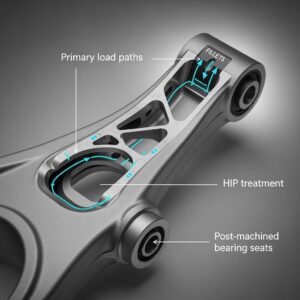
Metal 3D Printing for U.S. Automotive Lightweight Structural Brackets and Suspension Components
Read More »About Met3DP
Recent Update
Our Product
CONTACT US
Any questions? Send us message now! We’ll serve your request with a whole team after receiving your message.







